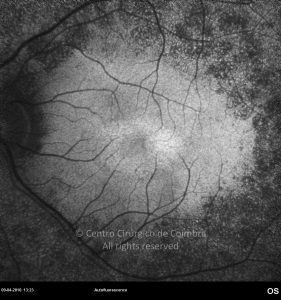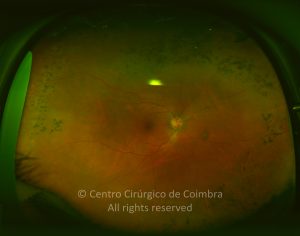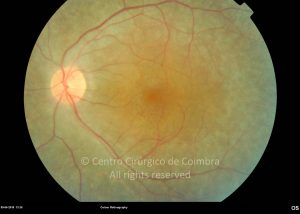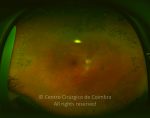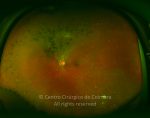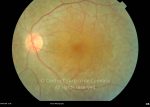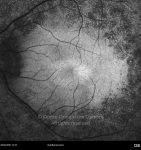Usher’s syndrome is characterized by the association of retinitis pigmentosa and congenital sensorineural hearing loss, whether partial or profound. It is classified into 4 types:
- Type I – congenital deafness with early retinitis pigmentosa
- Type II – congenital partial deafness and late onset of retinitis pigmentosa
- Type III – initially normal hearing and vision that worsen with age; psychosis
- Type IV – X-linked with retinitis pigmentosa, cataract, deafness, ataxia, and mental retardation.
Ocular symptoms include photophobia, nyctalopya, dark adaptation problems, dyschromatopsia, photopsias, and constriction of visual fields.
The classic fundus appears with dark pigmentary clumps in the periphery and perivenous areas (bone spicules). Attenuated retinal vessels, waxy optic disc pallor, cystoid macular edema and fine pigmented vitreous cells may be found.
Molecular testing for specific forms of Usher’s syndrome will confirm the diagnosis.
Differential Diagnosis
- Congenital hypertrophy of the retinal pigment epithelium
- Congenital stationary night blindness
- Vitamina A deficiency





